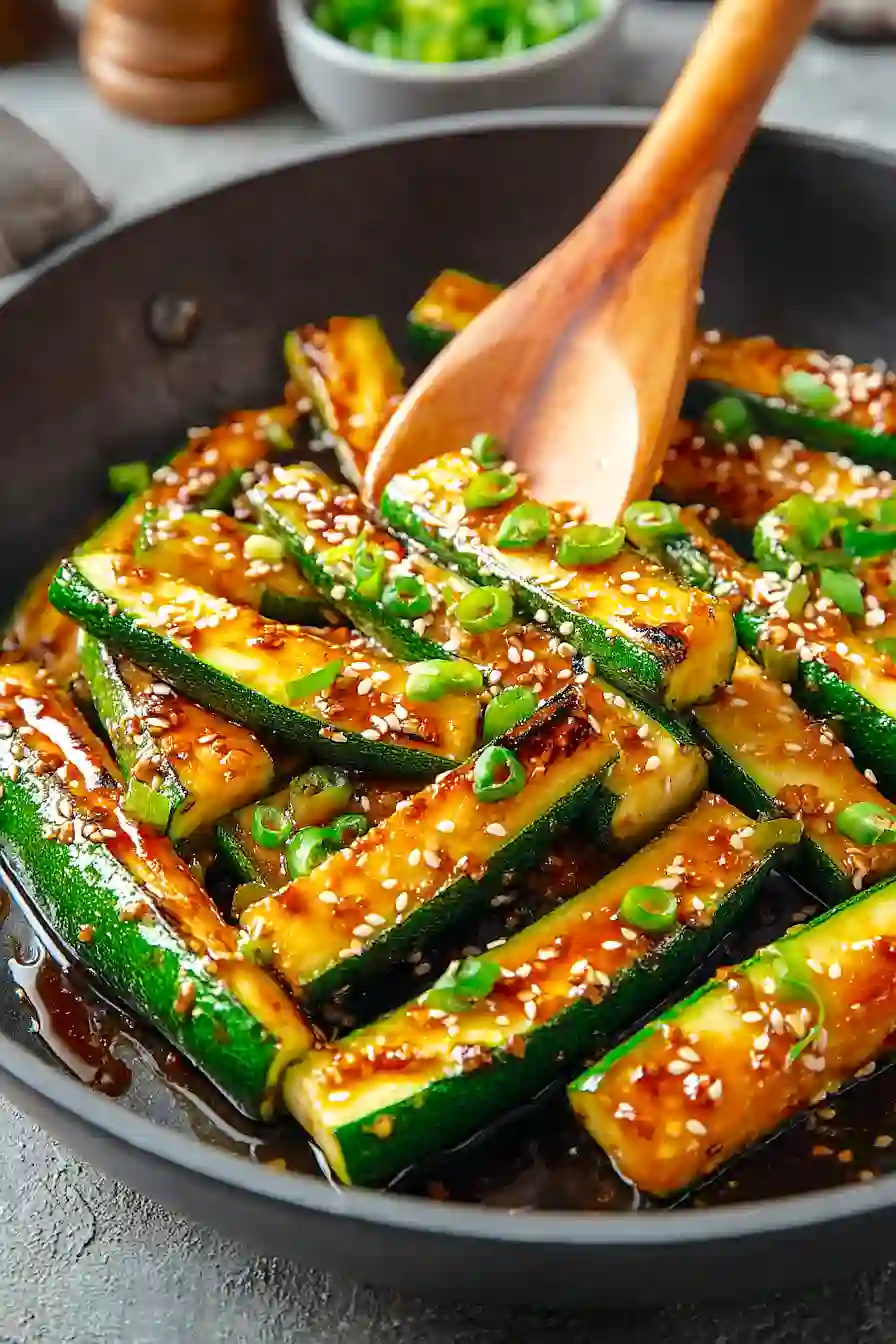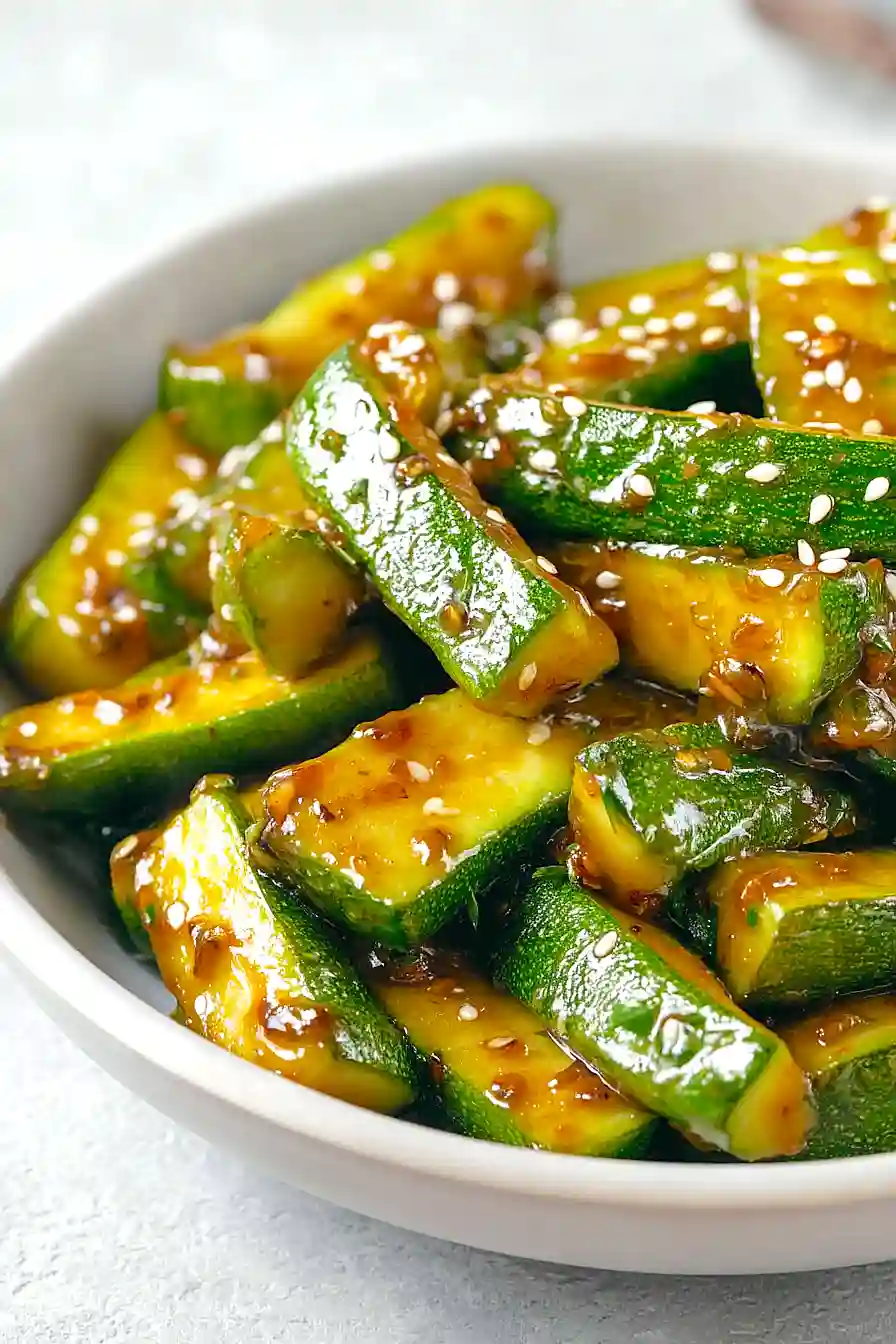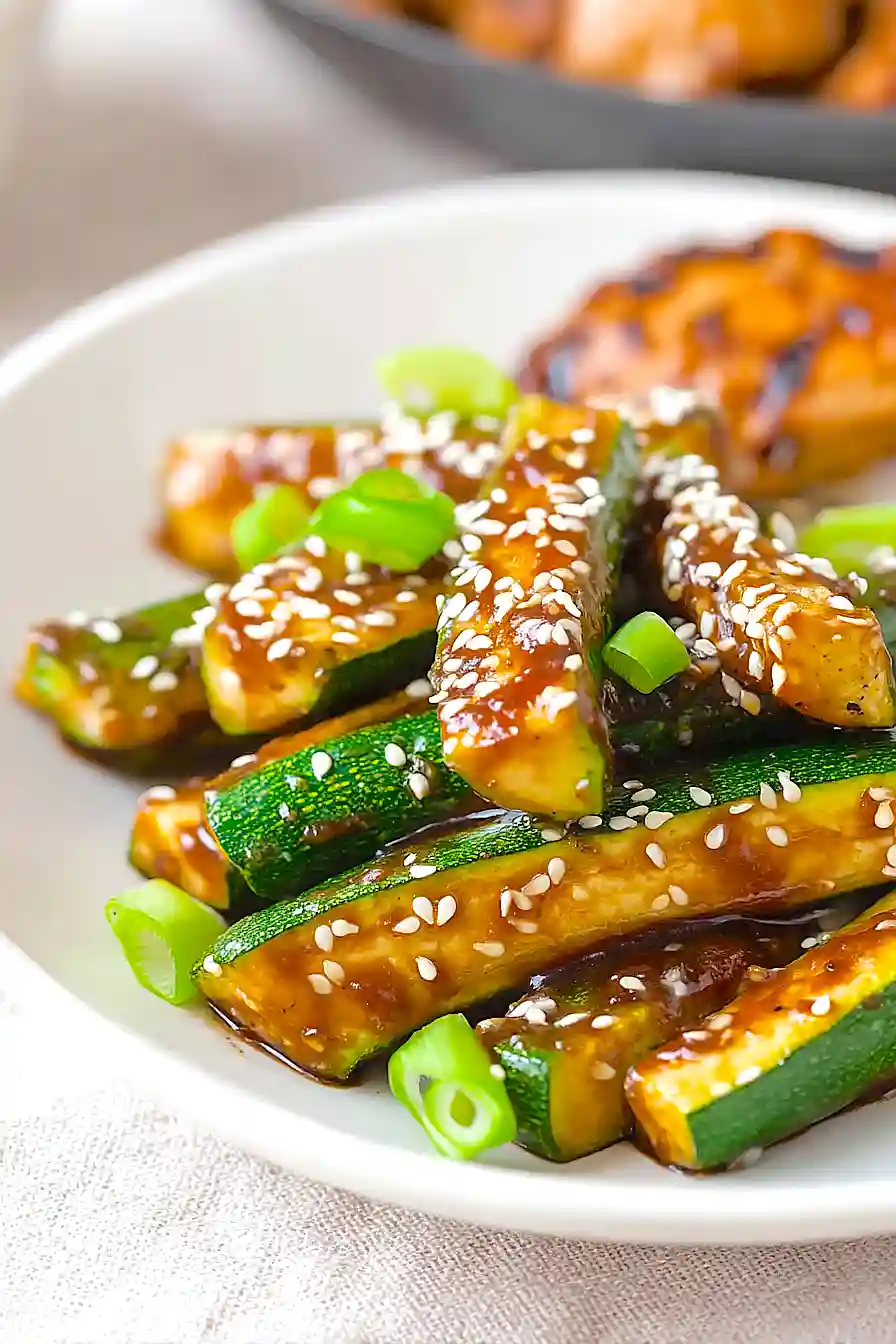I never knew what the big deal was about zucchini until I had it at a hibachi restaurant. Growing up, my mom would always steam it until it was mushy, and that’s just how I thought zucchini was supposed to be.
Turns out, the secret to really good zucchini is cooking it quickly over high heat, just like they do at hibachi places. It keeps the vegetable firm but tender, and picks up all those great flavors from the grill. Now when I make it at home, my kids actually ask for seconds – which is pretty much a miracle when it comes to vegetables!
Why You’ll Love This Hibachi Zucchini
- Quick side dish – Ready in just 25 minutes, this Japanese-inspired zucchini is perfect for busy weeknights when you need something fast but tasty.
- Basic ingredients – You only need a few common ingredients that you can find at any grocery store – no special trips to Asian markets needed.
- Healthy choice – This low-carb, vegetable-based side dish is packed with nutrients and fits into most dietary plans, including vegetarian and vegan diets.
- Restaurant flavor at home – The combination of sesame oil, soy sauce, and fresh ginger gives you that authentic hibachi restaurant taste right in your own kitchen.
What Kind of Zucchini Should I Use?
For hibachi-style cooking, medium-sized zucchini are your best bet – look for ones that are about 6-8 inches long and feel firm when you give them a gentle squeeze. While both regular green and yellow summer squash (also called yellow zucchini) work well in this recipe, the classic green variety tends to hold up better on a hot griddle. Try to pick zucchini that are straight rather than curved, as they’re easier to cut into even pieces that will cook uniformly. When prepping your zucchini, there’s no need to peel them – just give them a good wash, trim off the ends, and you’re ready to start slicing.
Options for Substitutions
This hibachi-style recipe is pretty adaptable and here are some easy swaps you can try:
- Zucchini: You can easily swap zucchini with yellow squash, Mexican squash, or even Japanese eggplant cut into similar sizes. Each will give you that nice tender-crisp texture.
- Fresh garlic and ginger: If you’re out of fresh ingredients, use 1/4 teaspoon garlic powder and 1/4 teaspoon ground ginger instead. The flavor won’t be quite as bright, but it’ll work in a pinch.
- Vegetable oil: Any neutral cooking oil works here – try canola, avocado, or grapeseed oil. Just avoid olive oil as its flavor might be too strong.
- Soy sauce: For a gluten-free option, use tamari. Coconut aminos work too, but they’re slightly sweeter, so you might want to use a bit less.
- Sesame oil: This gives the dish its signature Asian flavor, so it’s best not to skip it. But if you must, add a tablespoon of butter and extra sesame seeds for flavor.
- Sesame seeds: You can use black or white sesame seeds, or skip them if you don’t have any – the dish will still taste great!
Watch Out for These Mistakes While Cooking
The biggest mistake when making hibachi zucchini is overcrowding the pan, which causes the vegetables to steam instead of getting that signature hibachi char – work in batches if needed and use a large pan over high heat. Getting your pan screaming hot before adding the vegetables is crucial, as lukewarm temperatures will result in mushy zucchini instead of that perfect tender-crisp texture. To prevent your zucchini from becoming waterlogged, cut the pieces uniformly (about 1-inch chunks) and avoid stirring too frequently – let them sit for 1-2 minutes on each side to develop a nice golden-brown color. For the best flavor development, add your soy sauce and sesame oil only in the final minute of cooking, as these can burn if added too early and create bitter flavors.
What to Serve With Hibachi Zucchini?
This Japanese-inspired zucchini dish makes a perfect side for all your Asian-style meals, but there are lots of tasty ways to serve it! The most natural pairing is with hibachi-style proteins like grilled chicken, steak, or shrimp – just like you’d get at a Japanese steakhouse. You can also serve it alongside some steamed white rice or fried rice to soak up all that yummy sauce. For a complete hibachi experience at home, add some clear onion soup or a simple green salad with ginger dressing on the side.
Storage Instructions
Keep Fresh: This tasty hibachi zucchini is best enjoyed right away, but if you have leftovers, pop them in an airtight container in the fridge. They’ll stay good for about 2-3 days, though the zucchini might release a bit more moisture over time.
Meal Prep: Want to get ahead on your meal prep? You can slice your zucchini and onions up to 2 days in advance – just keep them separate in airtight containers in the fridge. The garlic and ginger can be minced ahead too, making dinner time super quick and easy!
Warm Up: To enjoy your leftover hibachi zucchini, give it a quick stir-fry in a hot pan for 2-3 minutes. This helps maintain that nice, slightly crisp texture we love in hibachi-style veggies. I don’t recommend microwaving as it can make the zucchini too soft.
| Preparation Time | 10-15 minutes |
| Cooking Time | 15-20 minutes |
| Total Time | 25-35 minutes |
| Level of Difficulty | Easy |
Estimated Nutrition
Estimated nutrition for the whole recipe (without optional ingredients):
- Calories: 250-300
- Protein: 5-8 g
- Fat: 15-20 g
- Carbohydrates: 25-30 g
Ingredients
- 2 medium zucchini
- 1 medium onion
- 1 tsp minced garlic
- 1 tsp minced ginger
- 1 tbsp neutral oil
- 2 tbsp soy sauce
- 1 tbsp toasted sesame oil
- 1 tbsp sesame seeds
- 1/2 tsp salt
- 1/4 tsp ground black pepper
Step 1: Prepare the Vegetables
- 2 medium zucchini
- 1 medium onion
Slice the zucchinis into sticks about half an inch square and 2-3 inches long.
Cut the onion into quarters from root to end, then slice each quarter into pieces about half an inch thick.
Properly prepping the vegetables ensures even cooking and helps create that classic hibachi texture.
Step 2: Heat the Pan and Sauté the Onion
- 1 tbsp neutral oil
- sliced onion from Step 1
Preheat a sauté pan or wok over medium-high heat.
Once the pan is hot, add the neutral oil and heat until it begins to shimmer, about 30 seconds to 1 minute.
Add the sliced onion to the pan and cook for about 2 minutes, stirring occasionally, until the pieces begin to soften and become fragrant.
Step 3: Add Garlic and Ginger
- 1 tsp minced garlic
- 1 tsp minced ginger
Add the minced garlic and minced ginger to the pan with the onion.
Stir constantly for about 30 seconds to release their aroma and flavor.
Be careful not to burn them, as this can make the dish taste bitter.
I often turn the heat down just slightly at this stage to prevent burning.
Step 4: Cook the Zucchini
- zucchini sticks from Step 1
Add the zucchini sticks to the pan with the softened onion, garlic, and ginger.
Stir every minute and continue cooking for 4-5 more minutes.
Allow the zucchini to brown slightly on the edges for extra flavor, but don’t overcook—it should stay tender-crisp for that authentic hibachi experience.
Step 5: Add Sauces and Seasonings
- 2 tbsp soy sauce
- 1 tbsp toasted sesame oil
- 1/2 tsp salt
- 1/4 tsp ground black pepper
- 1 tbsp sesame seeds
Pour in the soy sauce and toasted sesame oil, then sprinkle the zucchini with salt, black pepper, and sesame seeds.
Sauté everything together for about 1 minute more until the vegetables are tender-crisp and well-coated with the sauce and seasonings.
I like to add the sesame oil at the end to preserve its rich, toasty aroma.
Step 6: Serve the Hibachi Zucchini
Transfer the hibachi zucchini to a serving plate.
For the most authentic experience, serve alongside fried rice, your choice of protein, and yum yum sauce.
Enjoy while hot!




